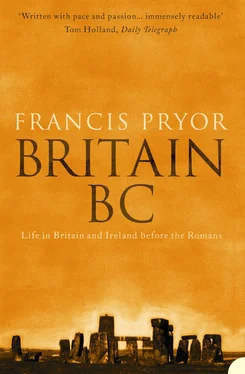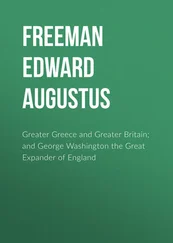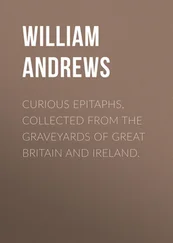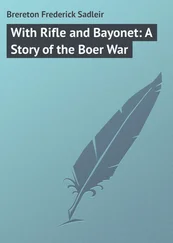Clive Gamble has already been mentioned as a prehistorian with an extraordinary ability to stand back from the detail of a subject and see things from an unusual or unexpected angle. Writing about the social context of Upper Palaeolithic art, he pointed out that societies may have been organised in small groups, but this did not mean that their concerns were entirely parochial. Far from it. In a paper written in 1991 he provided convincing evidence that people at this time were in communication over extraordinarily long distances. 39 Those three bone spatulae, with their close parallels on the plains of Russia, surely reinforce his theory. The physical expression of this communication would have been in the form of ceremonial exchange of important objects, such as the spatulae. These ceremonies would have served to reinforce social ranking within the various societies that took part. I would imagine that the spatulae were given to an important person, most probably a senior shaman. It’s worth noting that such long-distance communication would have been very much more difficult had Britain not been physically united with mainland Europe.
Earlier I said that the Upper Palaeolithic was the period in which many of the defining characteristics of modern civilisation first become apparent. In his 1991 paper Clive Gamble showed how art in the Upper Palaeolithic was far more than just a matter of beauty, whether of carved objects or painted cave walls. This, of course, was the period of the famous cave paintings at places like Lascaux in France and Altamira in Spain. 40 Sadly, in Britain we still lack such extraordinary finds, but we do know from smaller, portable carved objects (such as those spatulae) that people here used, appreciated and made art. What did art and its appearance in the Upper Palaeolithic signify? To quote from Clive’s paper:
Art for me is…a system of communication and includes a wide range of mediums and messages. As an act of social communication it is defined by style which…has its behavioural basis in a fundamental human cognitive process: personal and social identification through comparison. Consequently [art] style is not just a means of transmitting information about identity but is an active tool in building social strategies. 41
This is very important, because it dismisses commonly heard simplistic views such as, for example, that cave art was merely something done to give good luck in the hunt – the equivalent of tossing a coin in the fountain. That’s rather like saying that Michelangelo’s masterpiece was painted simply to decorate the ceiling of the Sistine Chapel – classy, hand-painted wallpaper. In part it was, but it was also a great deal more than that: among many other things it was a profound restatement of the aspirations that lay behind the later Renaissance – and that’s just scratching the intellectual surface.
What we’re witnessing in the Upper Palaeolithic is very complex, but it probably includes the elaboration, if not the development, of languages that were sufficiently sophisticated to express the ideas and symbolism lying behind the art, because an image devoid of any written or spoken textual reference is hard to comprehend. This is particularly true if the image is being introduced to people who are not familiar with the culture or part of society in question. As a European, for example, I can admire the execution of Japanese art, but I find much of its meaning and the philosophy behind it incomprehensible. In such circumstances explanation is essential. Recently the newspapers carried a story of how an installation by Damien Hirst was collected up and thrown away, along with the rubbish, by the gallery’s cleaners on the morning after the opening party. It consisted of empty Coca-Cola cans and other debris and, according to the newspaper I read, had a market value of £40,000. The artist, to his credit, thought it all very amusing. The point is that the textual reference, whether written or explicit, was missed by the cleaners. The art had lost its context, and with it its meaning and distinctiveness. Whichever way one looks at it, there had been a failure in communication. So into the bin it went.
The Red ‘Lady’ of Paviland belonged to the first or earlier part of the Upper Palaeolithic, which is separated from the later part by the last (and hopefully final) great glacial cold period, which began around twenty-five thousand years ago. During its coldest phase, about eighteen thousand years ago, large areas of northern Europe (including what was later to become Britain) were uninhabited. About thirteen thousand years ago, occupation of the areas abandoned to ice and freezing-cold tundra was resumed.
CHAPTER THREE Hotting up: Hunters at the End of the Ice Age
I’D LOVE TO TRAVEL to the moon. In stellar terms it’s so near, but I know it’s somewhere I’ll never visit, no matter how much I’d like to. True, I’ll probably never visit the Australian Outback either, or certain suburbs of Torquay – but then again, I might. Such journeys aren’t impossible, in the way that a trip to the moon is. And that, in a rather roundabout way, is where we find ourselves now, in the later part of the Upper Palaeolithic, with the final glacial maximum just behind us. We’re on the archaeological moon, looking out towards earth, with the planets and stars of the Lower and Middle Palaeolithic light years behind us.
We ended the last chapter with the glacial conditions that prevailed eighteen thousand years ago. The best evidence now suggests that the area later to be known as the British Isles was reoccupied around 12,600 years ago, about five hundred years later than nearby parts of the continent. 1 The climate suddenly reached a warm peak around thirteen thousand years ago, when it was actually slightly warmer than today. Then it grew colder again, reaching another near-glacial period which began around eleven thousand years ago and ended a thousand or so years later. This final colder period was by no means as severe as the last glacial maximum, and is known as the Loch Lomond sub-phase. When it ended, around ten thousand years ago, our own, postglacial or Flandrian, period began. During the Loch Lomond sub-phase, glaciers covered areas of the Scottish Highlands. So it was pretty cold, but not nearly as bad as the earlier glacial maximum, which peaked around eighteen thousand years ago, and ultimately took Paviland Cave out of the picture.
Most late glacial or Later Upper Palaeolithic sites in Britain predate the Loch Lomond sub-phase, and many are from caves (although open sites are known) which are found in England south of the Humber and in south Wales. Although Britain has yet to produce the quantities of superb art found on the continent, there are one or two examples of carving on bone, ivory and stone. My personal favourite is a very confident yet delicately executed horse’s head on a fragment of horse rib, found in a cave at Creswell Crags, Derbyshire.
The Late Upper Palaeolithic is a field that has seen a great deal of recent activity, with many exciting new excavations; but I shall confine myself to just one site, Gough’s Cave, in Somerset. 2 In a way it selected itself, because what it has revealed is both extraordinary and, frankly, a little bizarre.
Gough’s Cave is in that spectacular tourist attraction the Cheddar Gorge, on the southern slopes of the beautiful Mendip Hills. It has been excavated twice, in the 1890s and the 1980s. The earlier excavations brought the site to public attention, but in the process they removed most of the important archaeological deposits. Other chance discoveries were made in the early years of the twentieth century as Gough’s Cave was converted into what it is today, a show cave for visitors. As a result of this earlier activity, the dig of the 1980s was of necessity small, and was partly undertaken to assess the reliability of the earlier work and the extent to which ancient deposits still survived intact within the cave.
Читать дальше












